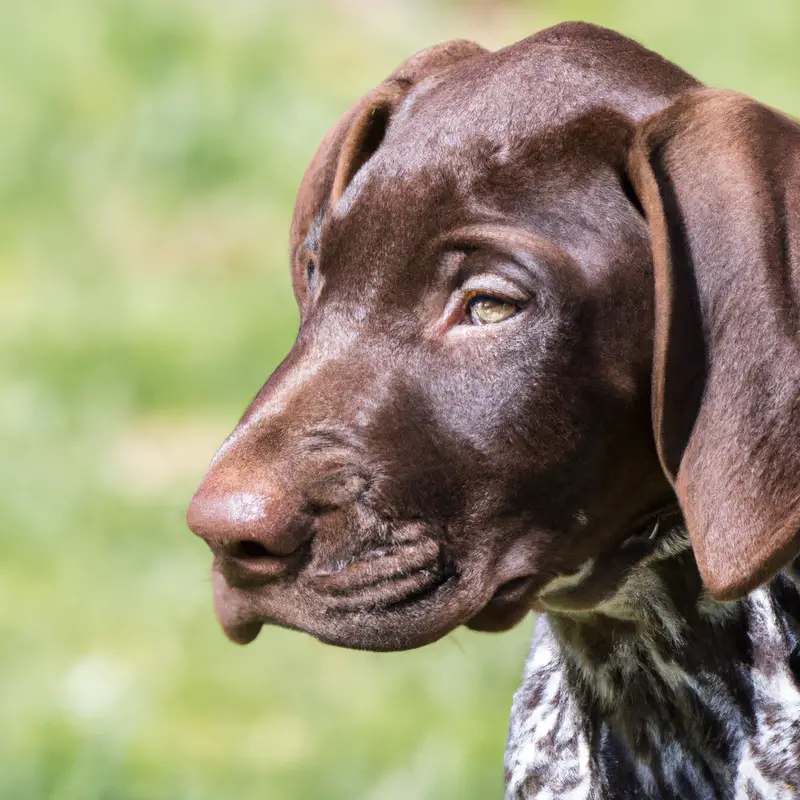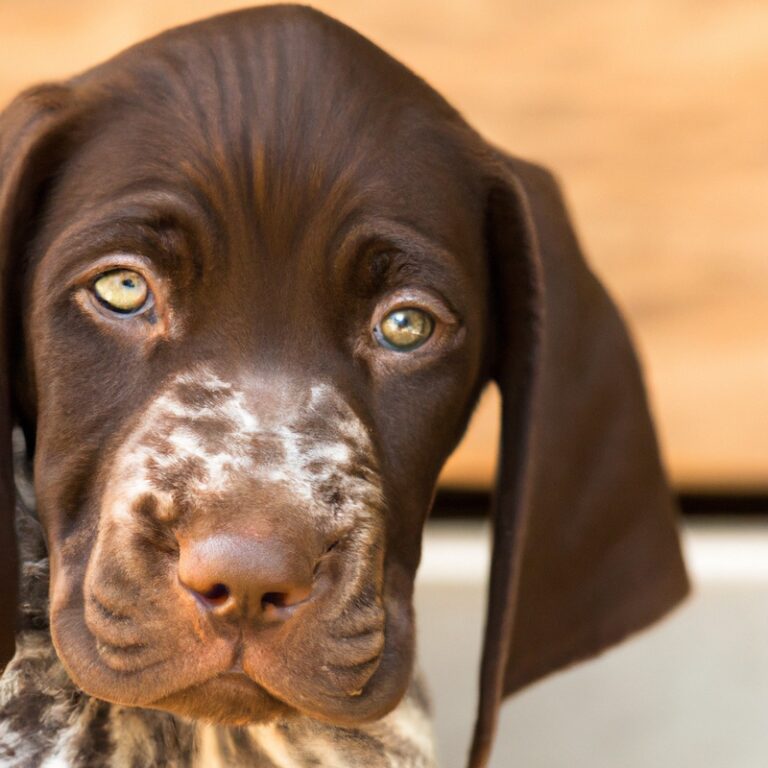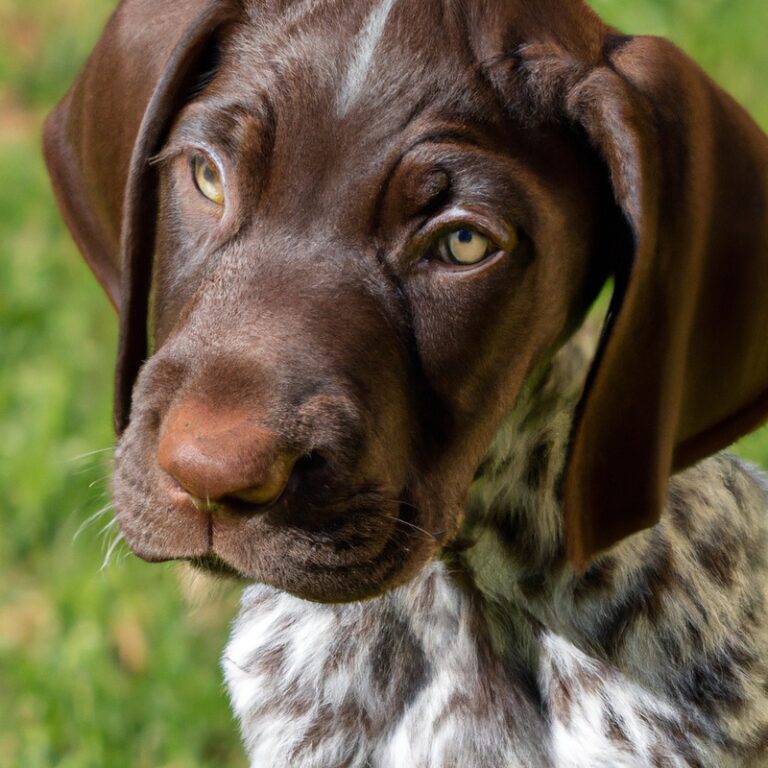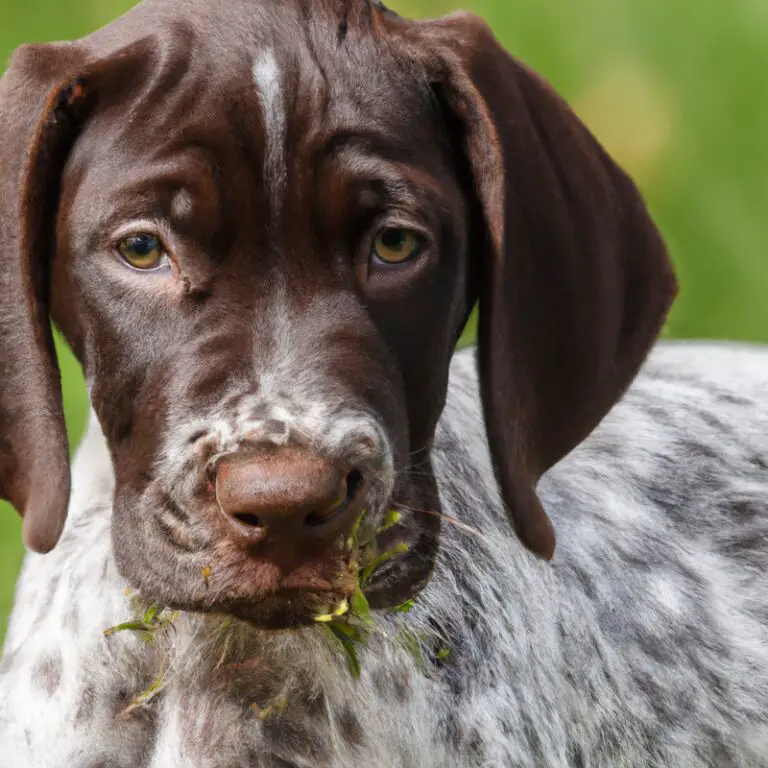What Are The Best Methods For Crate Training a German Shorthaired Pointer Puppy?
Key Takeaways:
- Positive reinforcement is the most effective method for crate training a German Shorthaired Pointer puppy.
- Gradual introduction and desensitization to the crate helps create a positive association for the puppy.
- Ensuring the crate is comfortable and inviting can make the training process easier.
- Consistency and patience are key for successful crate training.
Do you want to ensure that your German Shorthaired Pointer puppy becomes a well-behaved and obedient member of your family? If so, crate training may be just what you need.
Crate training is not only a useful tool for housebreaking your puppy, but it also provides a safe and comfortable space for them to retreat to when needed.
But where do you even begin with crate training? Don’t worry, I’ve got you covered.
As a dog trainer with years of experience, I’ve tried and tested various methods to find the best ones for German Shorthaired Pointer puppies.
In this article, I’ll walk you through the step-by-step process, share some expert tips, troubleshoot common challenges, and even suggest alternative training methods. Get ready to crate train your furry bundle of joy like a pro!
| Method | Description | Pros | Cons |
| Potty Pad Training | Using potty pads or indoor dog toilets for elimination needs | – Provides an indoor option for eliminatingn- Helps prevent accidentsn- Suitable for people in apartments or without easy outdoor access | – Can lead to reliance on potty pads and difficulties transitioning to outdoor eliminationn- Requires consistency and regular pad changes |
| Crate Training | Using a crate as a safe and comfortable space for the puppy | – Builds den-like associationn- Helps with housebreaking and preventing accidentsn- Provides a secure place for the puppy when unsupervised | – May cause distress if used excessively or improperlyn- Requires time and patience for proper training and acclimation |
| Clicker Training | Using a clicker for positive reinforcement and marking desired behaviors | – Helps with teaching commands and tricksn- Reinforces positive behaviorn- Strengthens bond between owner and puppy | – Requires consistent use of the clicker and treatsn- May not work as effectively for all puppies |
| Positive Reinforcement Training | Using rewards, praise, and encouragement for desired behavior | – Creates a positive learning environmentn- Builds trust and obediencen- Effective for most puppies | – Requires consistency and patiencen- Not suitable for puppies with behavioral issues that require specialized training |
Crate Training Basics for German Shorthaired Pointer Puppies
Why Crate Training is Important for German Shorthaired Pointer Puppies
Why crate training is important for German Shorthaired Pointer puppies Crate training is important for German Shorthaired Pointer puppies for several reasons. Firstly, it helps with potty training.
By providing a designated space for them to eliminate, you can teach them to hold their bladder and bowels until they are let outside.
Secondly, crate training provides a safe and secure environment for your puppy when you are unable to supervise them. It helps prevent them from getting into mischief or potentially harmful situations around the house.
Thirdly, crate training helps with separation anxiety.
By gradually getting your puppy used to spending time alone in their crate, you can alleviate their anxiety and help them become more independent.
Choosing the Right Crate for Your German Shorthaired Pointer Puppy
Choosing the right crate for your German Shorthaired Pointer Puppy is important for their comfort and safety. First and foremost, make sure the crate is the right size.
It should be big enough for them to stand up, turn around, and stretch out comfortably, but not so big that they can use one side as a bathroom.
Next, consider the material of the crate. A sturdy and durable crate is ideal, especially if your puppy is a chewer.
Wire crates or plastic crates with solid sides are good options.
Another important factor to consider is the crate’s ventilation. Look for crates with good airflow to keep your puppy cool and prevent overheating.
Lastly, ease of cleaning is essential.
Choose a crate that is easy to take apart and clean in case of accidents or spills. By keeping these factors in mind, you can choose the right crate that will provide a secure and comfortable space for your German Shorthaired Pointer puppy.
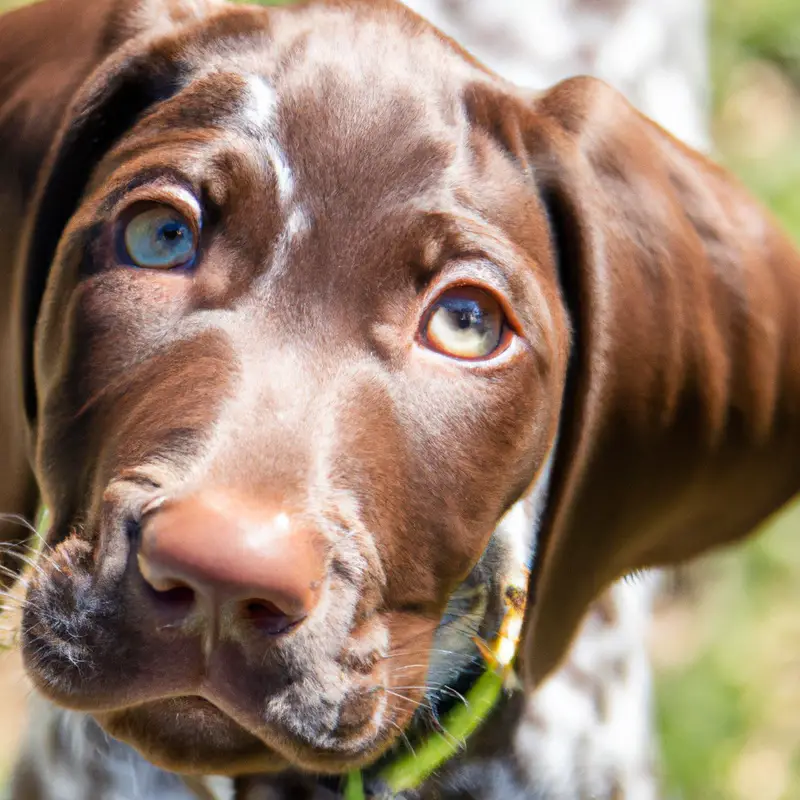
Setting Up the Crate for Training Success
Setting up the crate properly is important for successful training. First and foremost, choose the right size crate for your German Shorthaired Pointer puppy.
It should be large enough for them to stand, turn around, and lie down comfortably, but not too big that they can eliminate in one corner and sleep in another.
Place the crate in a quiet area of your home where your puppy can still see and hear you. Make the crate cozy and inviting by lining it with a comfortable bed and adding some soft blankets.
To make the crate a positive place, introduce your puppy to it gradually.
Start by leaving the crate door open and encouraging them to explore it on their own. Reward them with treats and praise whenever they go inside.
Once your puppy is comfortable being in the crate, you can start closing the door for short periods of time.
Be sure to provide them with plenty of toys or chew treats to keep them occupied while they are in there.
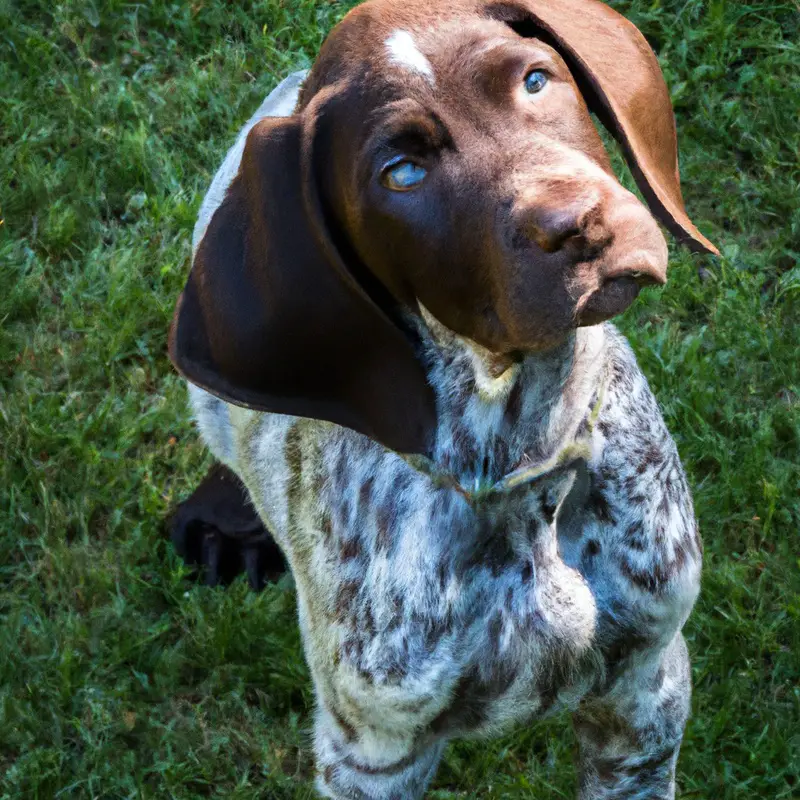
Step-by-Step Guide to Crate Training a German Shorthaired Pointer Puppy
Introducing the Crate to Your German Shorthaired Pointer Puppy
When introducing the crate to your German Shorthaired Pointer puppy, it’s important to make it a positive and inviting space. First and foremost, place the crate in a central location where your puppy can see and hear you.
Make the crate comfortable by adding soft bedding and a few toys.
To encourage your puppy to go inside, you can use treats or their favorite toy. It’s crucial to never force your puppy into the crate or use it as a punishment.
Instead, let them explore and get comfortable at their own pace.
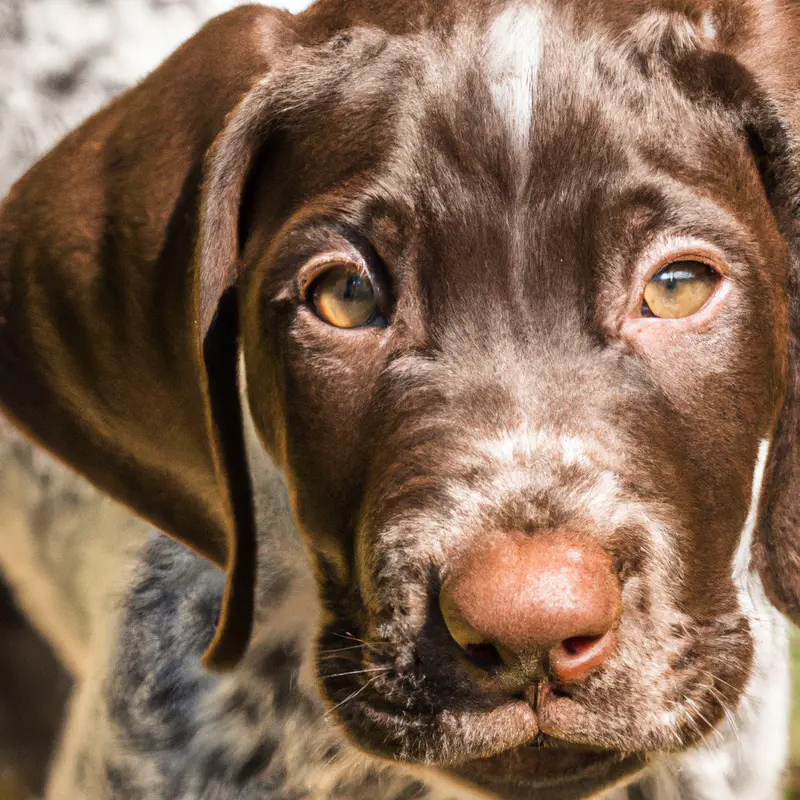
Creating a Positive Association with the Crate
Creating a positive association with the crate is an important step in crate training your German Shorthaired Pointer puppy. The goal is to make the crate a safe and comfortable place for your puppy.
Here are some tips to help you achieve that:
- Start with a gradual introduction. Begin by placing the crate in a quiet area of your home and leaving the door open. Allow your puppy to explore the crate at their own pace. You can entice them with treats and toys to make it a positive experience.
- Make the crate cozy. Line the crate with a soft blanket or bed to provide comfort. Add their favorite toys and a few treats inside, so they associate the crate with good things. You can also put a shirt with your scent in the crate to make it feel more familiar.
- Use positive reinforcement. Whenever your puppy voluntarily goes into the crate, praise and reward them with treats or verbal praise. This helps reinforce the positive association with the crate and encourages them to use it willingly.
- Gradually increase crate time. Start by closing the crate door for short periods while you are present. Gradually extend the time they spend in the crate, always rewarding them for good behavior. Make sure to balance crate time with plenty of playtime and exercise outside the crate.
Gradually Increasing Crate Time for Your German Shorthaired Pointer Puppy
Gradually increasing crate time is an important part of crate training for German Shorthaired Pointer puppies. It helps them get accustomed to being in the crate for longer periods without feeling anxious or stressed.
Start by introducing short periods of crate time, maybe 10-15 minutes, and gradually increase it as your puppy becomes more comfortable.
Make sure the crate is comfortable and enticing, with bedding and toys. Remember to praise and reward your puppy for good behavior when they are in the crate.
This will help them associate crate time with positive experiences and make the training process easier.
Establishing a Feeding Routine inside the Crate
When it comes to establishing a feeding routine inside the crate for your German Shorthaired Pointer puppy, there are a few key things to keep in mind. First and foremost, make sure that the crate is a positive and comfortable place for your puppy.
They should associate the crate with positive experiences and not see it as a punishment.
To establish the feeding routine, start by placing your puppy’s food and water bowls inside the crate. This will help them become accustomed to eating their meals in the crate.
It’s important to note that you should only leave the food and water in the crate for a designated period of time, usually about 15-20 minutes.
This helps with potty training and prevents overeating. If your puppy hasn’t finished their meal in that time, remove the bowls until the next scheduled feeding time.
Another important aspect of establishing a feeding routine inside the crate is timing.
Try to feed your puppy at the same time every day to help regulate their digestive system and establish a consistent schedule. This will also make it easier for you to predict when they need to go outside for potty breaks.
By following these simple steps, you can effectively establish a feeding routine inside the crate for your German Shorthaired Pointer puppy.
Using Crate Training for Housebreaking
Using crate training for housebreaking is a highly effective method when it comes to potty training your German Shorthaired Pointer puppy. First and foremost, make sure that the crate is the correct size for your puppy – not too big or too small.
The crate should be a comfortable and safe space for your puppy, like their own little den.
By incorporating a consistent schedule for bathroom breaks and rewarding your puppy for using the designated potty area outside, you can reinforce good bathroom habits. Remember to never use the crate as a punishment and always supervise your puppy when they are outside the crate.
Tips for Successful Crate Training with German Shorthaired Pointer Puppies
Maintaining a Consistent Routine for Crate Training
Maintaining a consistent routine is key to successful crate training. Firstly, establish a schedule for feeding, playtime, and potty breaks.
This helps your German Shorthaired Pointer puppy understand when they can expect to be let out of the crate.
Secondly, consistently use the crate for short periods throughout the day, gradually increasing the duration. This helps your puppy get accustomed to being in the crate without feeling anxious or stressed.
Thirdly, be consistent with your commands and rewards during crate training.
Use the same cues and praise when they enter the crate and when they come out. By maintaining a consistent routine, you’ll set your puppy up for crate training success.
Using Positive Reinforcement during Crate Training Sessions
When crate training your German Shorthaired Pointer puppy, using positive reinforcement can be a very effective approach. Instead of scolding or punishing your puppy for not behaving in the crate, focus on rewarding desirable behavior.
During crate training sessions, start by making the crate a comfortable and inviting space for your puppy.
Use treats, toys, and praise to encourage your puppy to enter the crate willingly. When your puppy enters the crate or shows calm behavior inside, reward them immediately with verbal praise and a treat.
Remember to be consistent with your positive reinforcement.
Each time your puppy demonstrates desired behavior in the crate, reward them. This will help them associate the crate with positive experiences and make them more willing to spend time in it.
Avoid using punishment or negative reinforcement during crate training sessions.
This can create fear and anxiety in your puppy, making crate training more challenging. Instead, focus on positive reinforcement and patience.
With time and consistency, your German Shorthaired Pointer puppy will learn to love their crate and see it as their cozy den.
Avoiding Negative Associations with the Crate
Avoiding Negative Associations with the Crate The key to successful crate training is to avoid any negative associations with the crate. First and foremost, make sure that the crate is a positive and comfortable space for your German Shorthaired Pointer puppy.
Introduce them to the crate gradually, starting with short periods of time inside and gradually increasing the duration.
Never use the crate as a punishment. This will only create a negative association and make your puppy fearful of the crate.
Instead, use positive reinforcement and reward your puppy for going into the crate voluntarily.
Make the crate a cozy and inviting place by adding a soft blanket or their favorite toys. Avoid rushing the process.
Let your puppy explore the crate at their own pace and never force them inside.
Provide treats or toys to encourage them to enter on their own. Additionally, never leave your puppy alone in the crate for extended periods.
This can lead to anxiety and negative associations.
By following these tips, you can help your German Shorthaired Pointer puppy develop a positive association with their crate, making crate training a much smoother process.
Providing Enrichment and Comfort in the Crate
When it comes to crate training your German Shorthaired Pointer puppy, providing enrichment and comfort in the crate is crucial. First and foremost, make sure the crate is the right size for your puppy – not too big or too small.
This will help create a cozy den-like space that feels secure.
To make the crate a comfortable and inviting place for your puppy, add some soft bedding, like a plush blanket or bed. This will provide a cozy spot for them to relax and sleep.
You can also consider placing a few of their favorite toys or chew bones in the crate to keep them entertained.
In addition to comfort, it’s important to provide enrichment in the crate. This can be done by rotating different toys and puzzles to keep your puppy mentally stimulated.
You can also use treat-dispensing toys or frozen Kongs filled with treats to engage their senses and make crate time more enjoyable.
Gradually Decreasing Reliance on the Crate
As your German Shorthaired Pointer puppy becomes more comfortable with crate training, it’s important to gradually decrease their reliance on the crate. Here are some tips to help you with this step:
- Start by leaving the crate door open during the day so your puppy can enter and exit freely. This will allow them to explore the house and gain confidence outside of the crate.
- Encourage your puppy to spend short periods of time outside the crate while you’re at home. Use baby gates or a playpen to create a safe area where they can play and rest.
- Begin leaving your puppy alone in a puppy-proofed room or area of the house for short intervals. Start with just a few minutes and gradually increase the time as they become more comfortable and trustworthy.
- Provide plenty of mental and physical stimulation outside of the crate. Regular exercise, interactive toys, and training sessions will help keep your puppy engaged and tire them out, reducing the need for crate confinement.
- Supervise your puppy closely when they are outside the crate to prevent any accidents or destructive behavior. Use positive reinforcement to reward good behavior and redirect them if necessary.
Troubleshooting Common Challenges in Crate Training German Shorthaired Pointer Puppies
Dealing with Separation Anxiety in the Crate
Dealing with separation anxiety in the crate can be challenging, but there are strategies you can try to help your German Shorthaired Pointer puppy feel more comfortable. Here are some tips:
- Introduce the crate gradually: Start by leaving the crate open and allowing your puppy to explore it at their own pace. Make it a positive experience by placing treats or toys inside, so they associate the crate with good things.
- Establish a routine: Establish a consistent schedule for crate time, with short periods of alone time at first. Slowly increase the duration as your puppy becomes more comfortable. This will help them feel secure and develop a sense of predictability.
- Provide comfort and distractions: Make the crate a cozy and inviting space by adding soft bedding and familiar items like a blanket or a toy. Consider giving them a puzzle toy or a treat-stuffed Kong to keep them mentally engaged while in the crate.
- Practice leaving and returning: Before leaving, make sure your puppy has had some exercise and playtime. Gradually increase the time you’re away, starting with just a few minutes and gradually building up. When you return, keep your greetings low-key to avoid overexcitement.
- Use positive reinforcement: Reward your puppy for calm behavior in the crate. Give them treats, praise, or a favorite toy when they enter the crate willingly or remain calm while inside. This will help them associate the crate with positive experiences.
Addressing Whining or Barking in the Crate
Addressing whining or barking in the crate is a common challenge when crate training your German Shorthaired Pointer puppy. It’s important to remember that whining or barking is a natural behavior for puppies who may feel anxious or want attention.
Here are a few tips to address this issue:
- Start Slow: Introduce the crate gradually and make it a positive space by placing treats and toys inside. Allow your puppy to explore the crate at their own pace.
- Establish a Routine: Create a consistent schedule for crate time, including regular meals, playtime, and potty breaks. This will help your puppy feel more secure and reduces the need to whine or bark for attention.
- Ignore the Whining: As difficult as it may be, avoid giving in to your puppy’s whining or barking. Giving attention or letting them out of the crate reinforces their behavior. Instead, wait for a moment of silence before opening the crate.
- Calming Techniques: Provide toys or treats that help to calm your puppy, such as puzzle toys or stuffed Kongs filled with frozen peanut butter. Soft music or white noise can also help soothe them.
- Gradual Lengthening: Increase the time your puppy spends in the crate gradually. Start with short intervals and gradually extend the duration as they become more comfortable. This helps build their tolerance and reduces anxiety.
Preventing Escape Attempts from the Crate
Preventing your German Shorthaired Pointer puppy from escaping the crate is important for their safety and your peace of mind. Here are some tips to help you prevent escape attempts:
- Secure the crate: Make sure the crate is sturdy and properly locked. Check the latches and doors regularly to ensure they are in good working condition.
- Make it comfortable: Create a cozy and inviting space inside the crate. Use a comfortable bed or blanket and include some of your puppy’s favorite toys or treats to make it a positive and enticing environment.
- Introduce gradually: Start by introducing the crate gradually and positively. Allow your puppy to explore it at their own pace and associate it with positive experiences, such as treats and praise.
- Gradual confinement: Begin by confining your puppy in the crate for short periods of time while you are present. Gradually increase the duration as your puppy becomes more comfortable and relaxed.
- Positive reinforcement: Reward your puppy for calm and quiet behavior inside the crate. Use treats, praise, and gentle petting to reinforce positive associations with the crate.
- Avoid punishment: Never use the crate as a form of punishment. It should be a safe and positive space for your puppy, not a place of fear or confinement.
Overcoming Fear or Resistance towards the Crate
Overcoming fear or resistance towards the crate is a common challenge during crate training for German Shorthaired Pointer puppies. Here’s how you can help your furry friend feel comfortable and secure in their crate:
- Introduce the crate gradually: Start by placing the crate in a quiet area of your home and keep the door open. Encourage your puppy to explore the crate freely without any pressure or coercion.
- Create a positive association: Make the crate a pleasant and rewarding place for your puppy. Place their favorite toys, treats, and blankets inside. Gradually increase the time your puppy spends in the crate while offering praise and rewards.
- Make it a cozy den: Ensure that the crate is appropriately sized for your puppy. A crate that is too big may not provide a sense of security. Additionally, line the crate with a soft bed or blanket to make it cozy and inviting.
- Gradual confinement: Once your puppy is comfortable entering the crate, start closing the door for short periods. Stay close by and provide reassurance, gradually increasing the duration of confinement.
- Desensitization to noise: Some puppies may be fearful of crate doors closing or latching. Help your puppy overcome this fear by practicing closing and opening the crate door slowly and calmly, gradually increasing the noise level.
Handling Regression in Crate Training Progress
Handling Regression in Crate Training Progress Sometimes, even when you think you’re making great progress with crate training your German Shorthaired Pointer puppy, they may suddenly start regressing. It can be frustrating, but don’t worry, it’s totally normal.
One common cause of regression is pushing your puppy too fast.
Remember, crate training is all about creating positive associations with the crate. If your puppy starts showing signs of stress or anxiety, take a step back and go at a slower pace.
Another reason for regression could be separation anxiety.
If your puppy becomes anxious or agitated when left alone in the crate, try gradually increasing the time they spend inside. Start with just a few minutes and gradually work your way up.
Consistency is key in preventing regression.
Stick to a regular routine and make sure everyone in your household follows the same rules. Avoid using the crate as punishment, as it can create a negative association.
Lastly, make the crate a comfortable and inviting space for your puppy.
Add soft bedding, toys, and treats to make it a positive and relaxing environment.
Alternative Methods for German Shorthaired Pointer Puppy Training
Using a Playpen or Exercise Pen for Confinement Training
Using a playpen or exercise pen for confinement training can be an effective method for helping your German Shorthaired Pointer puppy learn boundaries and stay safe. It provides a designated space where your pup can play, eat, and rest while still having some freedom of movement.
Here’s how you can make the most of this training tool:
- Set up the playpen in a quiet area of your home where your puppy can see and hear family members.
- Make sure the pen is large enough for your puppy to move around comfortably.
- Place toys, a water bowl, and a comfortable bed or blanket inside the pen to create a cozy environment.
- Use positive reinforcement and treats to encourage your puppy to go into the pen willingly.
- Gradually increase the amount of time your puppy spends in the pen, starting with short intervals and gradually extending them.
- Supervise your puppy while they’re in the pen to prevent any accidents or undesirable behavior.
- Avoid using the pen as a punishment tool, as it should be a positive and safe space for your puppy.
- Combine playpen training with regular exercise and socialization to ensure your puppy gets a well-rounded experience.
Utilizing Positive Reinforcement and Clicker Training Techniques
When it comes to training your German Shorthaired Pointer puppy, two effective methods to consider are positive reinforcement and clicker training techniques. These methods focus on rewarding desired behaviors rather than punishing unwanted ones.
By incorporating positive reinforcement, you can motivate your puppy by rewarding them with treats, praise, or playtime when they exhibit the behavior you want to encourage.
For example, if your puppy sits when you ask them to, give them a treat and praise them enthusiastically. Clicker training is another useful technique that involves using a small handheld device called a clicker.
You make a clicking sound when your puppy performs the desired behavior, and immediately follow it with a treat or praise.
This helps your puppy associate the click with a reward. By implementing these techniques consistently and patiently, you can effectively train your German Shorthaired Pointer puppy while building a strong bond based on positive reinforcement.
Happy training!
Exploring Puppy-Proofed Rooms for Supervised Freedom
When it comes to giving your German Shorthaired Pointer puppy some supervised freedom, exploring puppy-proofed rooms can be a great option. It allows them to move around and explore their surroundings while ensuring their safety.
By creating a puppy-proofed room, you can minimize the risk of accidents or damage to your home.
Here are a few things you can do to create a safe and enjoyable space for your puppy:
- Remove any potentially harmful objects or substances from the room, such as cleaning supplies, cords, or small objects that could be swallowed.
- Secure any loose wires or cables that may be tempting for your puppy to chew on.
- Provide appropriate chew toys and interactive puzzle toys to keep your puppy entertained and mentally stimulated.
- Make sure the room is properly ventilated and has a comfortable temperature for your puppy.
- Set up a designated area for your puppy to sleep, such as a cozy bed or crate.
Considering Professional Training Services for Assistance
If you’re feeling overwhelmed or unsure about training your German Shorthaired Pointer puppy on your own, considering professional training services might be a great option for you. Professional trainers have the experience and knowledge to guide you through the process and ensure that your puppy receives proper training.
They can help with a variety of training needs, from basic obedience commands to more advanced skills.
By working with a professional trainer, you can gain valuable insights and techniques to set your puppy up for success.
Balancing Crate Training with Socialization and Exercise Needs
Balancing crate training with socialization and exercise needs is essential for a German Shorthaired Pointer puppy’s development. It’s important to give them a safe and comfortable space in their crate, but not rely on it solely.
While crate training helps with potty training and preventing destructive behavior, it’s equally crucial to socialize your puppy with other people, animals, and environments.
This will help them become well-rounded and confident. Additionally, make sure to provide plenty of exercise to burn off their energy.
Daily walks, playtime, and mental stimulation are key to keeping them happy and healthy.
Graduating from Crate Training: Next Steps for Your German Shorthaired Pointer Puppy
Gradual Introduction to Unsupervised Freedom in the Home
Gradual Introduction to Unsupervised Freedom in the Home: Now that your German Shorthaired Pointer puppy has mastered crate training, it’s time to gradually introduce them to unsupervised freedom in your home. Remember, this process should be done gradually to ensure success.
- Start by confining your puppy to a small, puppy-proofed area in your home. This could be a bathroom or a gated-off section of a room. Make sure there are no hazards or valuable items they can destroy.
- Slowly increase the size of their confined area as they demonstrate good behavior. This could be done by removing the gate or allowing access to more rooms. Keep a close eye on them during this phase.
- As your puppy shows good behavior in the larger space, you can start giving them brief periods of unsupervised freedom. Start with just a few minutes and gradually increase the time.
- It’s important to continue reinforcing good behavior by providing chew toys, mental stimulation, and regular exercise. This will help prevent them from becoming bored and engaging in destructive behaviors.
Transitioning to Daytime and Nighttime Freedom without a Crate
Transitioning your German Shorthaired Pointer puppy to daytime and nighttime freedom without a crate is an exciting milestone. Here’s how you can do it smoothly:
- Gradual introduction: Start by allowing your puppy short periods of unsupervised time outside the crate during the day. This helps them learn to behave responsibly.
- Creating a safe space: Designate a specific area in your home where your puppy can roam freely. Make sure it’s puppy-proofed and free from any hazards.
- Establishing a routine: Establish a consistent daily schedule for your puppy’s meals, exercise, and bathroom breaks. This not only helps with the transition but also promotes good behavior.
- Positive reinforcement: Reward your puppy for good behavior and appropriate bathroom habits. Use treats, praise, and gentle guidance to encourage them to make the right choices.
- Gradual nighttime freedom: Begin by allowing your puppy to sleep outside the crate in a puppy-proofed room for short periods. If they have accidents or become destructive, go back to using the crate at night and try again later.
Maintaining Good Behavior and Preventing Regression
Maintaining good behavior and preventing regression are essential aspects of crate training your German Shorthaired Pointer puppy. Here are some key points to keep in mind:
- Consistency is key: Continue using the crate regularly, even after your puppy has graduated from training. This will help reinforce good behavior and provide a safe and secure space for your pup.
- Stick to a schedule: Keep a consistent routine for feeding, exercise, and potty breaks. This not only helps prevent accidents but also helps your puppy feel secure and reduces anxiety.
- Positive reinforcement: Reward your puppy for good behavior, such as going into the crate voluntarily or staying quiet while inside. Use treats, praise, and playtime to reinforce positive associations with the crate.
- Gradual freedom: Once your puppy demonstrates good behavior consistently, gradually increase their freedom around the house. Start by leaving the crate door open during supervised periods, and gradually extend the freedom as your pup proves trustworthy.
- Supervision is key: Always supervise your puppy when they’re outside the crate, especially in the early stages. This will help prevent any unwanted behaviors or accidents and allow you to continue reinforcing positive habits.
Continuing Training to Develop Off-Leash Reliability
Continuing training to develop off-leash reliability is essential for your German Shorthaired Pointer puppy. First and foremost, make sure your pup has a strong foundation in basic obedience commands such as sit, stay, and come.
This will provide a solid starting point for off-leash training.
Next, gradually introduce off-leash exercises in a controlled and safe environment, such as a fenced yard or a secure dog park. Begin with short distances and gradually increase the distance over time.
Using positive reinforcement techniques, reward your puppy for staying close and returning to you when called.
Treats, praise, and playtime can be effective motivators. Practice off-leash commands in different environments and with distractions, gradually increasing the level of difficulty.
This will help your puppy learn to focus on you even in exciting or distracting situations.
Seeking Ongoing Support for Training and Behavior Challenges
Seeking ongoing support for training and behavior challenges is vital for the development and well-being of your German Shorthaired Pointer puppy. Don’t worry if you encounter difficulties along the way; it’s normal! First and foremost, reach out to a professional dog trainer who specializes in German Shorthaired Pointers.
They can provide expert guidance and personalized training plans to address specific challenges.
Additionally, join online communities or local dog training classes to connect with other GSP owners. This network can be a great source of advice, tips, and motivation.
Final Verdict
Crate training is an essential and effective method for successfully raising a well-behaved German Shorthaired Pointer puppy. By choosing the right crate, setting it up properly, and following a step-by-step approach, you can create a positive association with the crate and gradually increase crate time.
Maintaining a consistent routine, using positive reinforcement, and providing comfort are key to successful crate training.
While challenges may arise, they can be overcome with patience and guidance. Alternatives methods and transitioning to freedom without a crate are also important steps to consider.
Trust in the process, stay consistent, and seek professional help when needed.
With these methods and strategies, you can ensure a happy and balanced relationship with your German Shorthaired Pointer puppy. Trust the process and enjoy the journey of raising a well-behaved and content pup.

